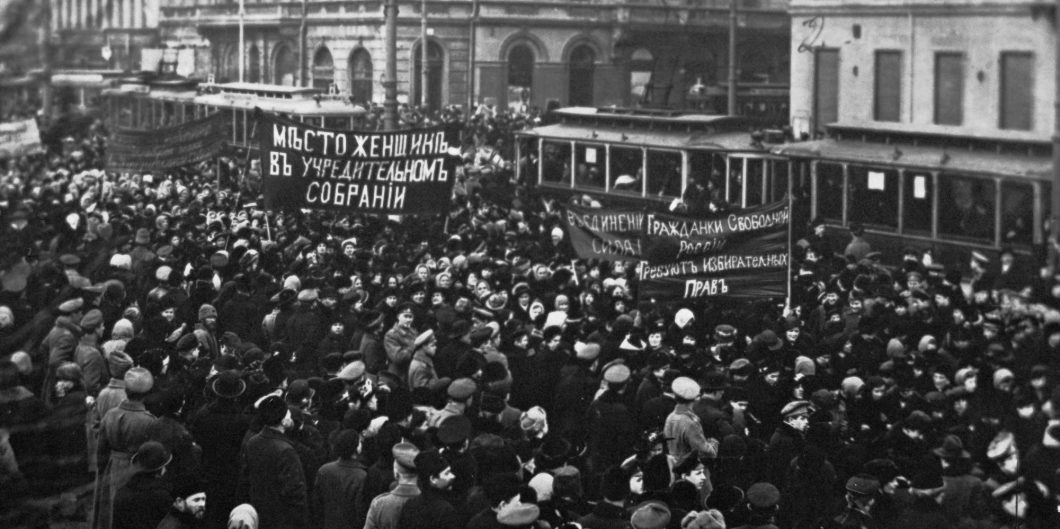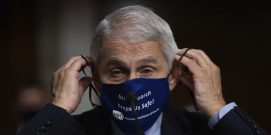Any suggestion of caution in policy responses last year in response to the developing pandemic was met with an unwarranted chorus of denunciation.
Russia 1917, America 2021
Although no serious person believes that the American government is in imminent danger of being overthrown, as the Tsarist regime and then the “provisional” republican government of Alexander Kerensky in Russia were in 1917 (giving rise to a seven-decade Communist despotism), there are ominous parallels between our situation today and the one that enabled the October Revolution.
First of all, the past nine months have witnessed a growing disrespect and disregard for the rule of law at both extremes of the political spectrum: on the Left, in response to the George Floyd killing, widespread urban violence, often spurred by semi-organized groups like Antifa and the Marxist Black Lives Matter (BLM) movement; on the Right, fanatics like those who invaded the Capitol to interfere with the counting of the electoral vote (including QAnon believers, who think that the government is run by a secret conspiracy of pedophiles and possibly cannibals). In some parts of the country, most notably Portland, we have witnessed something like a microcosm of the chaotic situation that existed in Russia in 1917 from the March “revolution” to the October one.
A second parallel between America’s present situation and that of Russia in 1917 is a pre-existing national crisis that had no direct connection with the political causes that inspired lawlessness. In 1917, the setting was prepared for a political uprising by bitter cold and food shortages, and by Russia’s increasingly unpopular participation in World War I. For its part, well before the George Floyd killing, America, like the rest of the world, experienced the COVID pandemic, generating not only many deaths among vulnerable populations, but also lockdowns of restaurants, hotels, gyms, and other facilities that interfered with people’s customary habits, caused widespread business shutdowns and unemployment, and often appeared, despite their medical justifications, to be imposed arbitrarily by governments in states like New York, California, and Michigan.
The third parallel is a reluctance of governmental authorities, confronted with a sudden spike of violent crime and sometimes anarchy, to control and deter it through arrest and punishment. In each instance, that reluctance reflected an uncertainty on the part of the authorities about whether enforcing the law was the right thing to do. Hence in 1917, when Russian mobs were allowed to empty the jails (as depicted in Alexander Solzhenitsyn’s recently translated The Red Wheel: March 1917), just as when French mobs stormed the Bastille in 1789, those jails actually housed none of the rumored “political prisoners.” Meanwhile, Kerensky and his associates, themselves liberals and socialists who saw “no enemies on the Left,” refused to take the steps necessary to restore order. Even the commander of Russia’s Baltic Fleet expressed his sympathies for the incipient Red revolution to his sailors, only to be murdered by them later on.
A Year of Riots
The most extreme examples of a loss of moral authority by government in America over the past nine months have occurred in the politically liberal havens of Seattle and Portland. In Seattle, some ten days after the Floyd killing, rioters operating under the BLM-Antifa banner, claiming that capitalism, police brutality, and the “fascist regime” of liberal Democratic mayor Jenny Durkan were responsible for racism, established a multi-block “police free zone,” nicknamed CHAZ, in order (ostensibly) to protect black people from the state’s “depredations.” Mayor Durkan readily complied and kept police out of the zone for 24 days. The zone was dominated by armed criminal gangs and anarchist “paramilitaries,” with gunshots heard almost every night. But only after two gun homicides and four known additional shootings occurred inside it (all of the victims being black), did Mayor Durkan feel compelled to shut it down.
Soon thereafter, in Portland, as summarized by journalist Andy Ngo, masked BLM/Antifa rioters smashed their way into the Multnomah County Justice Center, which houses a police station and jail. After their effort to free prisoners failed, the “protestors” started fires, forcing the staff to flee. The rioting continued nightly over the next four months, with fires being set in streets and buildings, and responding officers attacked with concrete blocks and explosives. In July, trying to storm a federal courthouse, thousands of rioters brought in tools and explosives to breach the building. Over the four-month period, Portland police suffered over 277 injuries. (Police in other cities reported hundreds more injuries.)
What, then, was the response of public officials to the riots? Portland mayor Ted Wheeler told President Trump to remove his National Guard “troops” from the city. (Mayor Wheeler was himself subsequently assaulted.) Oregon Senator Ron Wyden called the troops an “occupying army.” Governor Kate Brown described them as “secret police abducting people in unmarked vehicles.” And city officials throughout the country gave a hearing to, and sometimes followed, demands to “defund the police”—that is, significantly reduce their budgets—even though repeated polls show this is not a policy favored by most black people (who are the primary victims of violent urban crime). Under Kerensky, similarly, police stations were burned with impunity, young nihilists randomly shot police and people with German-sounding names, and two thousand criminals, including murderers, were released from a Moscow prison.
A majority tyranny, as the American Founders foresaw, is no less threatening, over the long run, to civic harmony and the security of individual rights than the despotism of an irresponsible tsar or oligarchy.
The spinelessness shown by American civic authorities in recent months was not simply explicable as the result of fear or even of mere demagoguery. Rather, in abstaining from taking firm action against an upsurge in crime and rioting, the authorities were displaying the same sort of self-doubt that the Kerensky government did in 1917. Indeed, leading American news media have been complicit: in August National Public Radio gave author Vicky Osterwell an opportunity to publicize her book In Defense of Looting. Both national and local media consistently referred to the rioters as “protestors,” and frequently denied the existence of the violence taking place before their eyes. The Associated Press even modified its guidelines to discourage the use of the term “riot,” given what it called the protestors’ “underlying grievances.”
Meanwhile, America’s best-known independent bookstore, Powell’s, located in Portland, announced just after the Capitol attack that it would not put Andy Ngo’s exposé of Antifa, Unmasked, on its shelves, although it would continue to sell the book online. Despite Powell’s decision, a crowd of protestors gathered outside the store on January 11, plastering the windows with signs and impelling the managers to close early as a safety precaution. (Fortunately, the book was still available on Amazon as of the time of this writing, and was listed as a number-one bestseller. But will Jeff Bezos be able to withstand comparable pressure if it arises?) To paraphrase an old riddle, if nobody reports that a riot occurred, did it really happen?
Law and Order: For Thee, but Not for Me?
Horrifying as the attack on the Capitol was, it must be acknowledged that today’s militant anti-Trumpers are not opposed to all attempts at violent interference with legal political processes. This fact was made evident most recently with the release of prominent director Aaron Sorkin’s feature film The Trial of the Chicago 7, widely expected to earn a few Oscars. The crime for which five of the “seven” were convicted in 1970 (before the conviction was overturned on appeal) was that of conspiring to disrupt the 1968 Democratic National Convention through violent intimidation. The so-called Youth International Party, or “Yippies,” distributed flyers in advance of the convention including maps of the venue, with the notation, “Break in Break in Break in,” and the observation that the Convention’s security precautions were “a farce.”
One of the Seven subsequently acknowledged that storming the convention hall was “obviously not out of the question.” Such a break-in, designed to forcibly alter the Convention’s presidential nomination, was prevented only because the number of “protestors” who showed up fell far short of the organizers’ plans, while Mayor Richard Daley took firm steps to block them. Although one of the convicted defendants, Jerry Rubin, later admitted that the Seven “wanted disruption” and “were guilty as charged,” they remain cult heroes on the Left. Thus, as other commentators have observed, were the seeds of today’s anarchy planted by the celebrated Sixties.
But aside from the growing spirit of popular lawlessness, which Abraham Lincoln identified as the chief threat to our nation’s survival in his 1838 Springfield Lyceum address “On the Perpetuation of Our Political Institutions,” our constitutional system is also threatened in a different way by the outcome of the two senatorial elections in Georgia, decided the day before the D.C. riot. Through those elections Democrats (thanks to Donald Trump’s absurd rants and machinations, which undermined the Republican candidates) gained control of both houses of Congress, to accompany Joe Biden’s winning the presidential race—albeit all of it by narrow margins.
While the consequences of the 2020 election do not threaten anything like the chaos of Russia in 1917, the danger posed by the electoral outcome in Georgia is that an unchecked Biden administration—under pressure from the Democrats’ most radical elements in Congress, in certain executive departments, and among its most influential donors and lobbyists—will push to enact an agenda that will be favored by (at most) a limited, and likely transient, majority of the population. Included in that agenda, along with Senator Bernie Sanders’ call for “defunding the Pentagon,” the adoption of a fully nationalized system of health care, and a comprehensive “Green New Deal,” are such potentially lasting structural changes in our governmental system as (a) packing the Supreme Court, (b) eliminating the Senate filibuster, and (c) packing the Senate, by granting statehood to the District of Columbia (probably unconstitutionally) and Puerto Rico. (The last-named proposal has already been brought forth by House Speaker Nancy Pelosi as part of H.R. 1.) While it is doubtful that the Left-Democrats’ overall policy agenda will benefit the country as a whole, it is the structural changes that are far more dangerous, since they threaten to undermine the very principle of representative government.
The preservation of a system of constitutional government and general respect for law depends not only on inculcating a “political religion” of law-abidingness in our youth, as Lincoln urged, including the recognition that riots and lawlessness cannot be tolerated, whichever side of the political spectrum they originate from. It also requires an appreciation that whichever party wins an election is obliged to take into account the views of a substantial minority of the electorate, lest they feel alienated from the political system and no longer represented by it. It also entails that the winning party not try to transform the constitutional system in a foolish endeavor to permanently guarantee its hold on power. A majority tyranny, as the American Founders foresaw, is no less threatening, over the long run, to civic harmony and the security of individual rights than the despotism of an irresponsible tsar or oligarchy.



